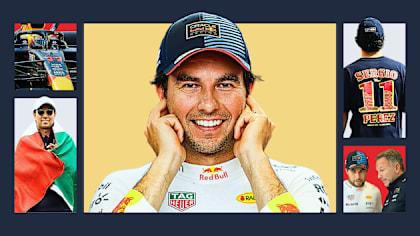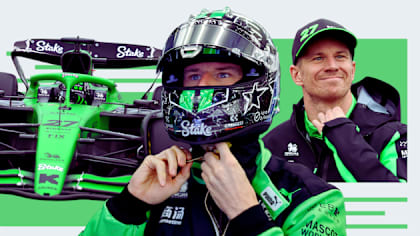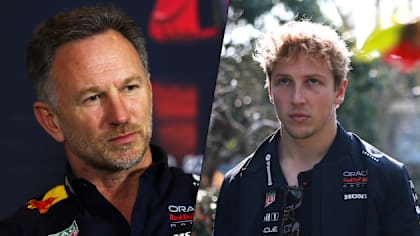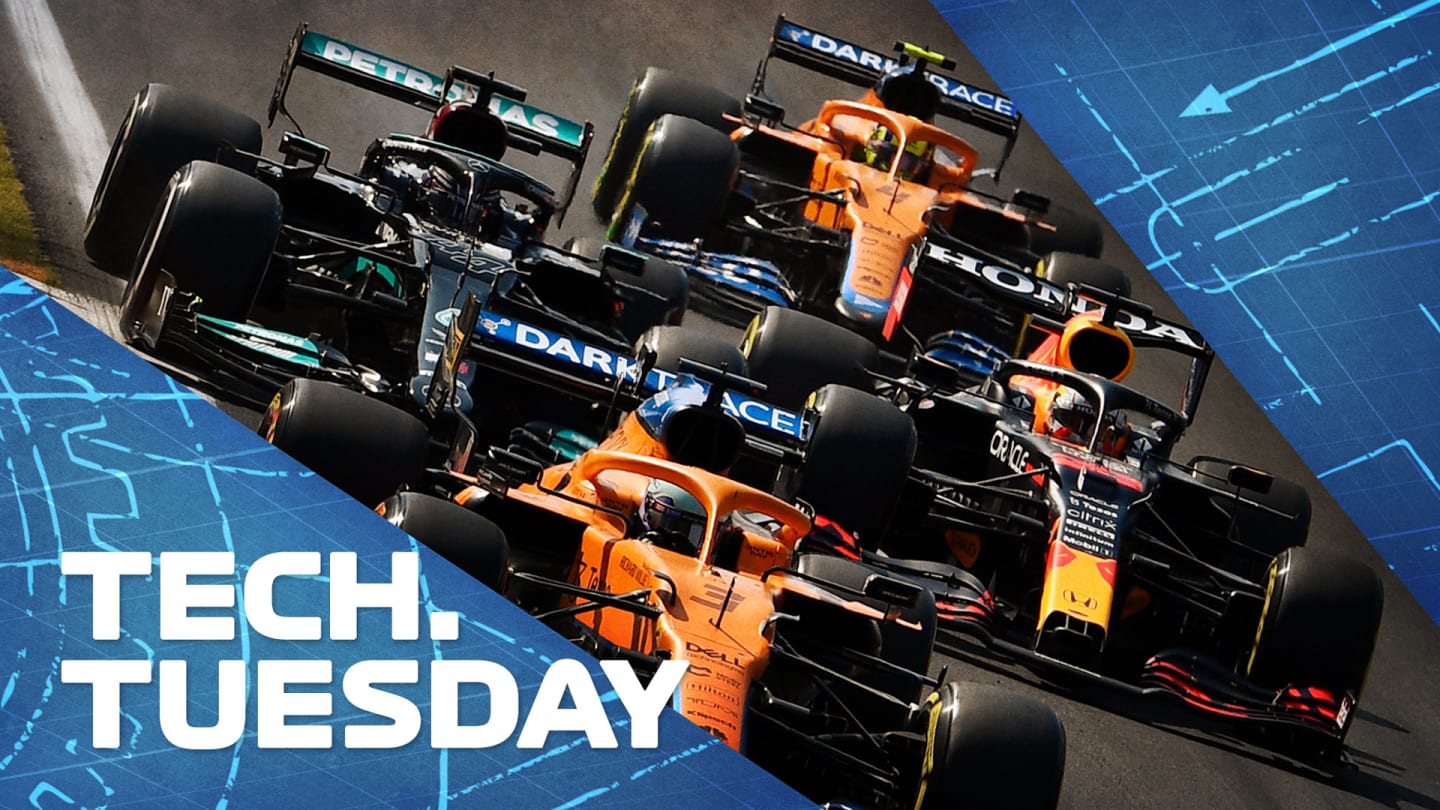
Technical
TECH TUESDAY: How McLaren engineered a shock 1-2 at low-drag Monza

Share

Drag and downforce are crucial factors when it comes to mastering Monza – so how did McLaren hit the perfect balance and secure a sensational Italian Grand Prix one-two on Sunday? Mark Hughes explains, with technical imagery from Giorgio Piola.
The Italian Grand Prix presented a fascinating study in what was the ultimate trade-off between drag and downforce and how that varied between the three-fastest cars – the Mercedes, the Red Bull and the victorious McLaren.
Monza’s elongated straights place a unique lap time reward on low drag. Each single point of drag coefficient (CD, the measure of drag) is calculated to be worth 0.09s per lap at Monza compared to, say, Hungary where such a reduction would be worth only 0.038s.
In other words, Monza is around 2.4 times as sensitive to drag levels as the Hungaroring. Compared to Barcelona, Monza would be around 1.6 times more responsive to drag.
The circuit requires therefore unique aerodynamic solutions and rear wings which are not seen at any other circuit on the calendar. Downforce induces drag but the relationship is not linear, given the myriad ways downforce can be created at different speed ranges, car attitudes, car designs etc.
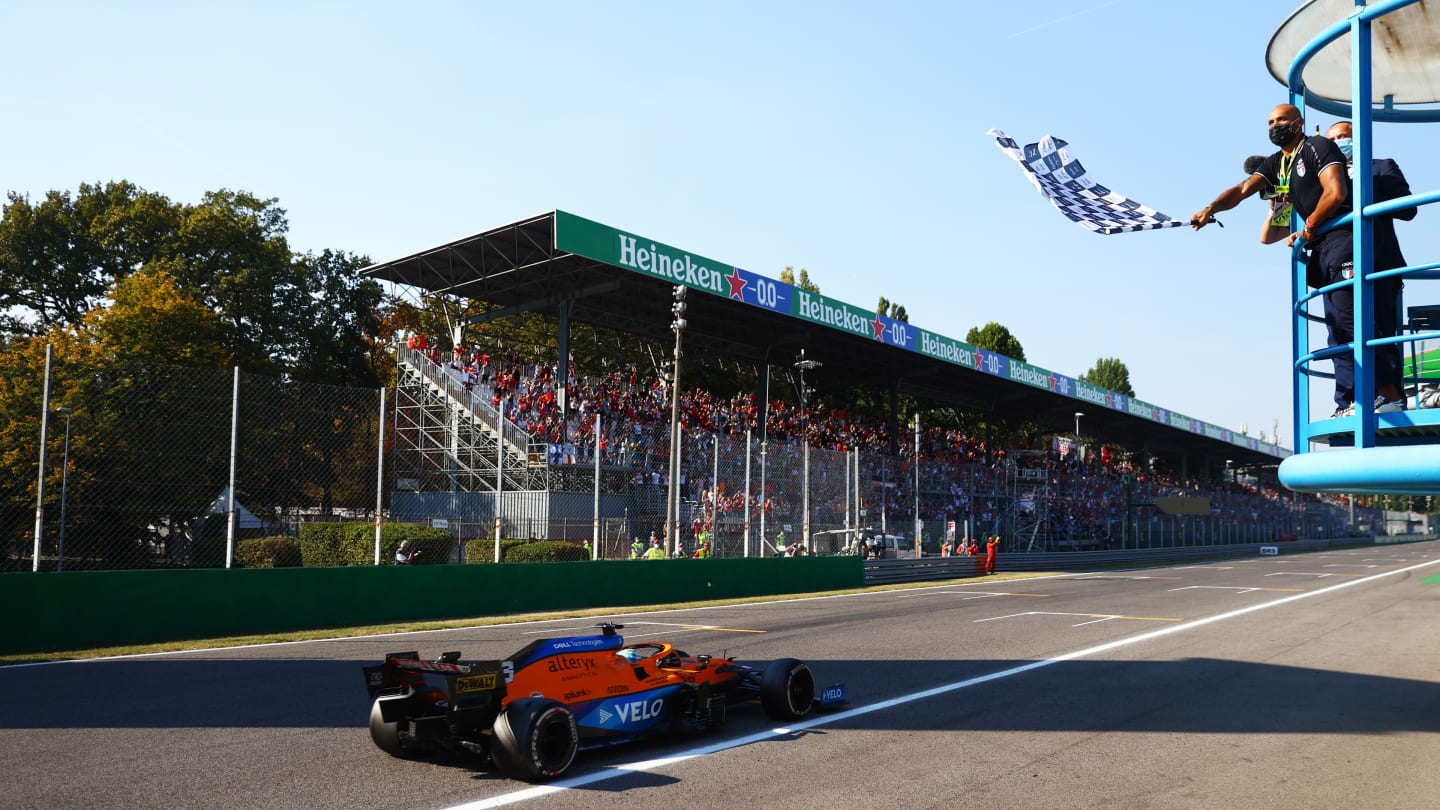
Monza is highly sensitive to drag – something that every team tackles in different ways
The rear wing is only the most obvious tell-tale of the downforce level. The cars themselves are all pitched differently in their trade offs between drag and downforce. The target efficiencies chosen by each team are based on the global requirements of all the tracks on the calendar. The range in which these are pitched will be driven by expected engine power and how much downforce they believe they can create.
Which means that a car which inherently generates a lot of downforce from its body and underbody may not need as much rear wing area as another car to achieve the same total downforce. This typically would be the Red Bull. But that’s only within the normal range of circuits. When the cars are put on the Monza track, it can be that the high-downforce car cannot shed enough drag without losing too much downforce for the ultimate lap time.
READ MORE: How wing levels could decide the 2021 title fight between Red Bull and Mercedes
At Monza a low-rake car such as the Mercedes is ideally configured for gaining much bigger efficiencies than the Red Bull when rear wing area is reduced from that used at conventional tracks – i.e. at a track where the ideal drag/downforce trade-off favours drag reduction, for a given level of wing area reduction, the Mercedes will lose less downforce than the Red Bull.
At more conventional tracks, where the requirement favours downforce more than low drag, it can be that it is the Red Bull which retains more of its downforce for a given level of wing area reduction.
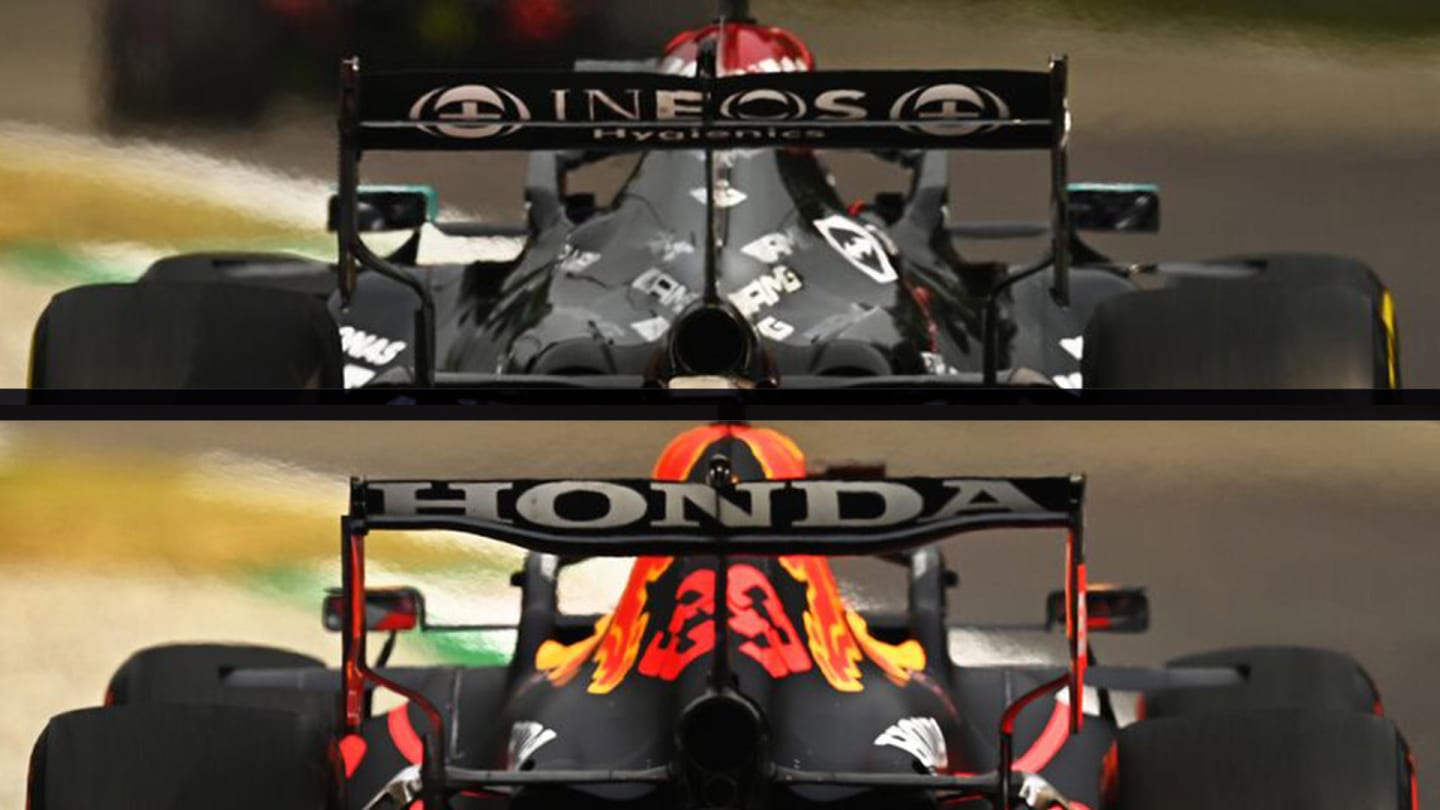
A rear view of the Mercedes (top) and Red Bull (bottom) rear wings on Friday at Monza, showing the spoon profile of the Red Bull's wing
This was indeed the case at Paul Ricard earlier in the season. But at Monza, the Red Bull just could not shed enough drag. Its rear wing was from its spoon-shape family, with more area in the centre of the main plane than at the outer ends. Above this was a flap carrying the same general spoon-shape contours, run at an extremely low angle of incidence (i.e. very flattened-out).
F1 NATION: The shoey returns at Monza – but who was to blame for the Hamilton-Verstappen clash?
Although the tapered-down outboard ends of both main plane and flap delete the most drag-inducing part of the wing on the Red Bull, visually it still appeared to be a higher downforce wing than those on the Mercedes and McLaren, which were much more conventional, with straight main planes and flaps, merely much shallower than at conventional tracks and way shallower than the Red Bull’s central section.
The inference is that around Monza the Red Bull would simply lose too much downforce to achieve its best lap time if they attempted to use a rear wing such as those on their two rivals. Their efficiencies in this part of the drag/downforce range are not good.
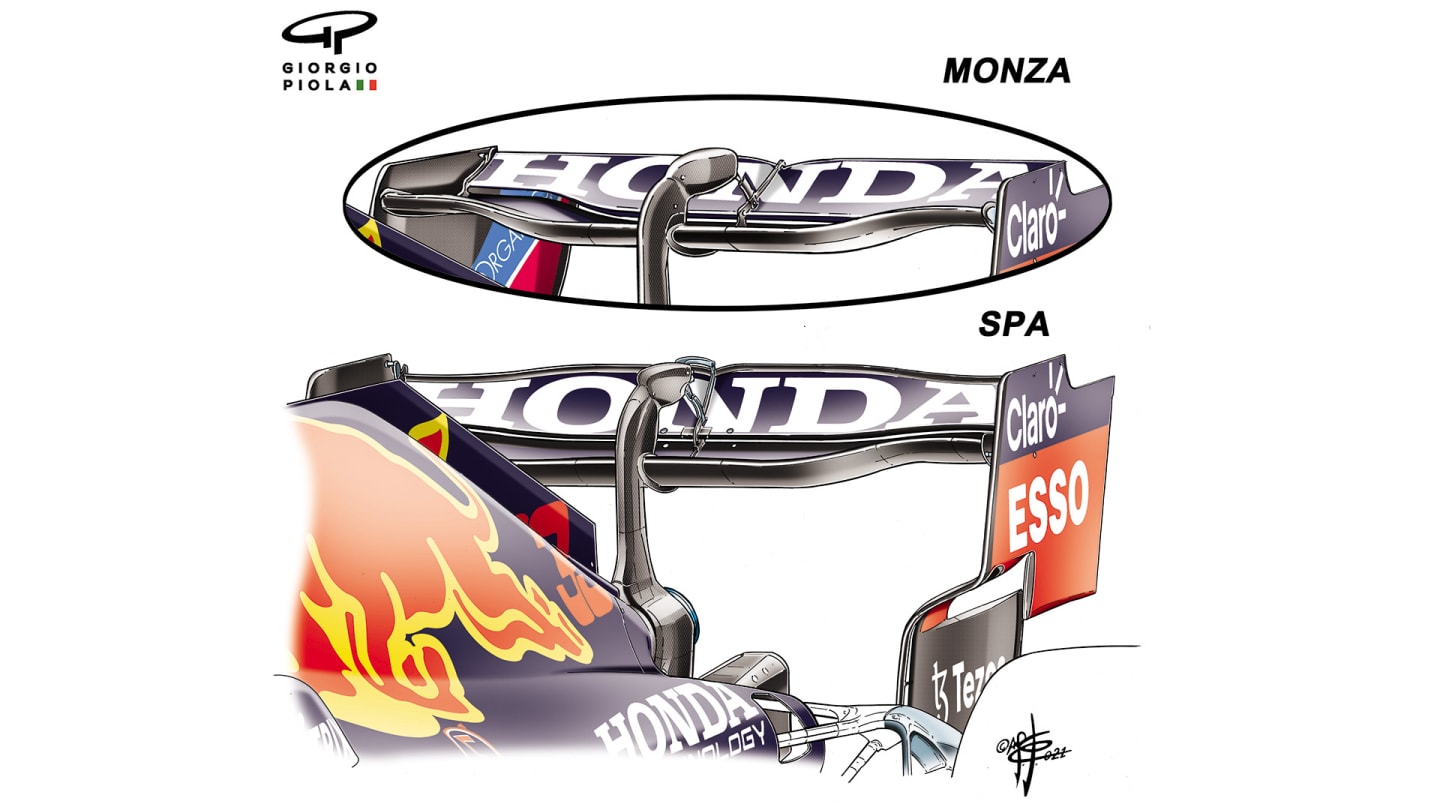
The Monza version of Red Bull’s spoon wing (top, above) compared to the higher-downforce Spa version (bottom image, above). The Monza-spec wing was tried at Spa in FP3, but only in preparation for Monza. The spoon section of both the main plane and flap allows for a significant downforce-generating area but with a big reduction in the outboard areas, which are the most drag-inducing.
As well as carrying what appears to be less total wing area than the Red Bull, the Mercedes’ lower rake would also reduce its effective flap angle compared to the Red Bull (especially at lower speeds, under braking and through the chicanes).
The Mercedes were clearly in a much happier place than the Red Bull in the efficiencies they retained at such low drag levels, and in Friday qualifying they locked out the front row, 0.4s clear of the field.

Straight main planes and flaps make Mercedes' rear wing much more conventional than Red Bull's
But it seems that the McLaren may have been in a particular sweet-spot at Monza – partly because of how untypically punishing the Red Bull’s high drag levels were.
Even though the McLaren was no closer than normal to the Mercedes in ultimate lap time, Red Bull’s difficulties meant McLaren were vying as the second-fastest cars, and both Lando Norris and Daniel Ricciardo virtually equalled the Friday qualifying time of Max Verstappen’s Red Bull.
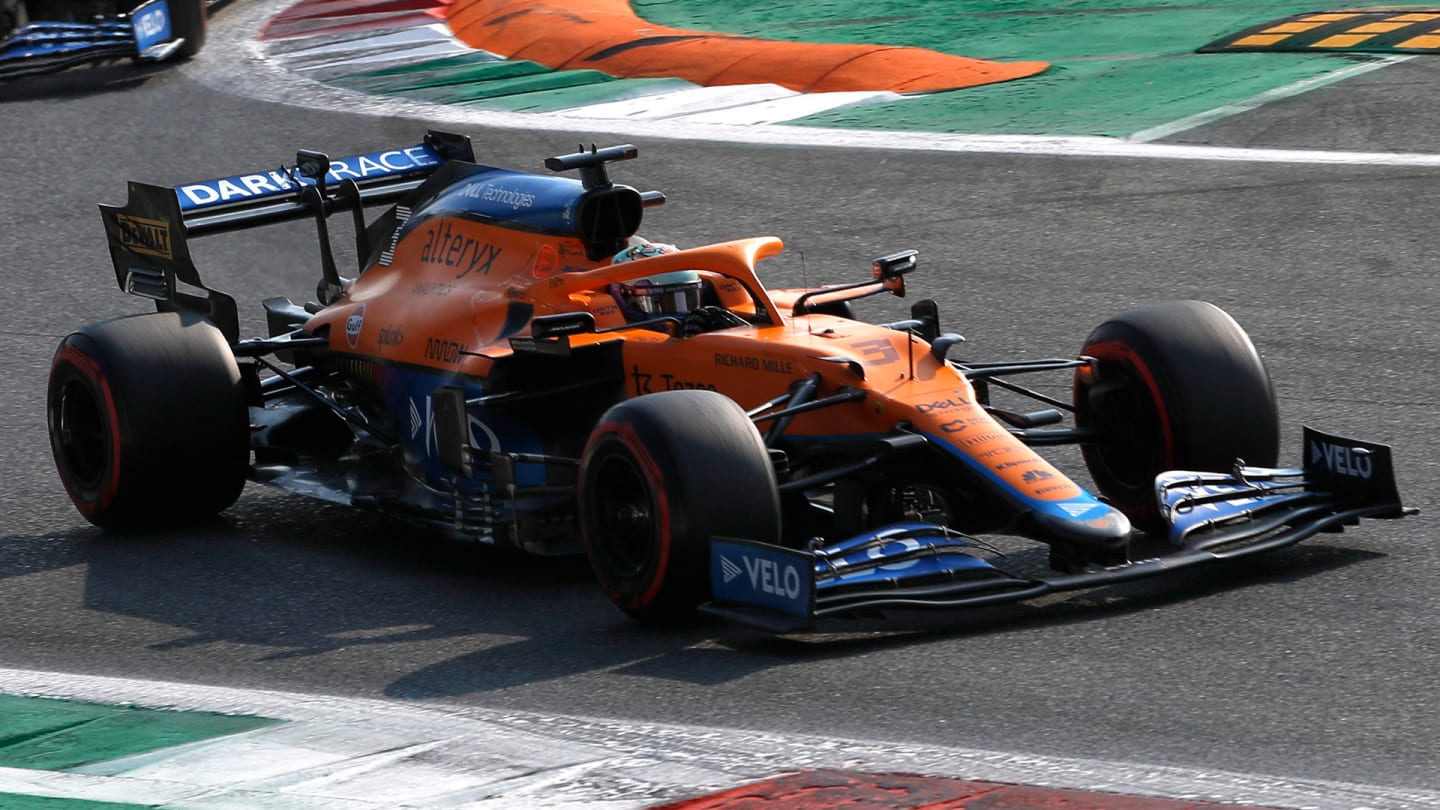
Much like the Mercedes, McLaren's rear wing featured a straight plane and shallower central section than the Red Bull's
Looking at Friday qualifying, where everyone is able to run DRS in free air, it can be seen that in the one sector where downforce remains important – Sector 2 – the Mercedes were fastest ahead of the Red Bull and McLaren.
In the drag-critical Sector 1, the Mercedes and McLaren were very closely-matched in time, with Verstappen way down in 12th. In the similarly drag-rewarding sector 3 the McLarens were first- and second-quickest on time, with Valtteri Bottas’ Merc third – and Verstappen in 14th. It appeared as if the McLarens were carrying the least drag of the three cars.
Looking at the speeds the cars were reaching at the various traps gives an idea of how those times were being achieved.
Speeds across the start/finish line are partly a product of exit speed from Parabolica and drag – and therefore a balance between downforce and drag. A few hundred metres further down before braking begins for the chicane, the dominant factor is drag. How much speed is gained between the start/finish line and the speed trap is a good general indication of relative drag levels (if we assume equivalent power).
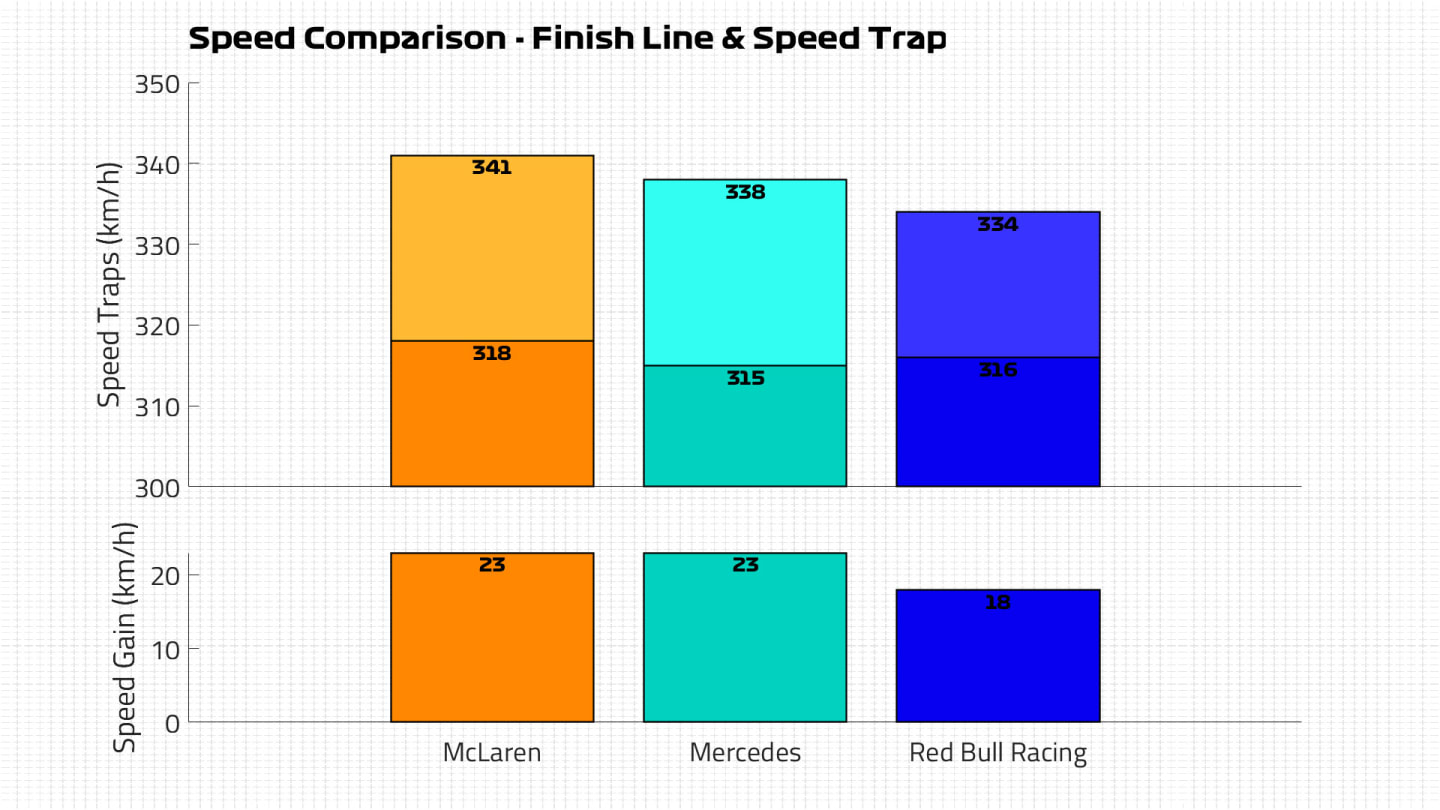
Both the Mercedes and McLaren were gaining 23km/h between those two points. The Red Bull was gaining just 18. Interestingly, although the Red Bull was faster than the Mercedes across the start/finish line (reflecting a higher exit speed from Parabolica) but 6km/h slower through the trap, the McLaren was faster than either at the start/finish, an advantage it retained through the trap.
So if the Sector 3 times suggest that the McLaren was carrying the least drag, how come it gained only the same 23km/h as the Mercedes between these two points on the straight? The fact that it was travelling 3km/h faster than the Mercedes at both points gives a clue. Drag squares with speed.
RACE HIGHLIGHTS: Watch all the action from a dramatic Italian Grand Prix at Monza
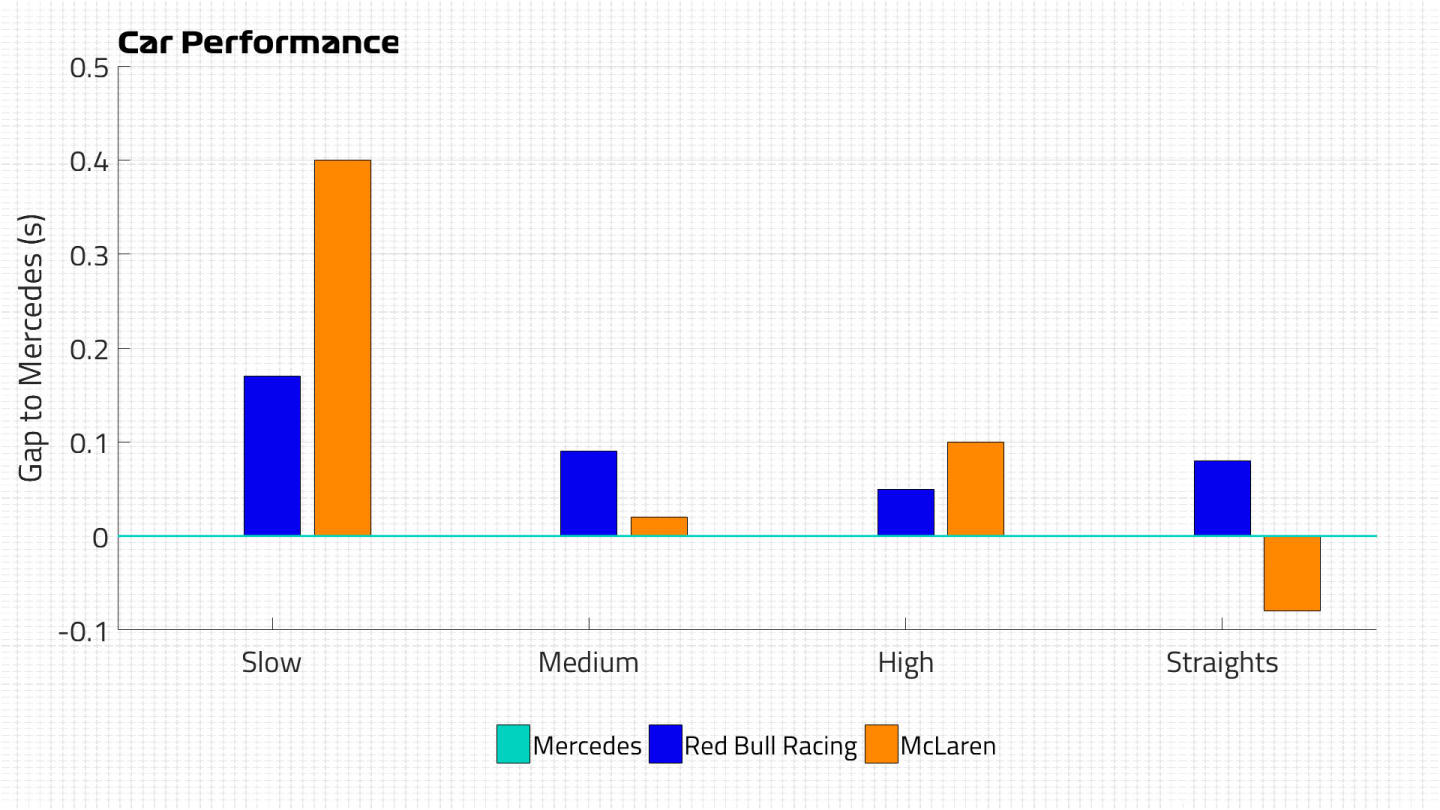
So if the two cars were carrying equal amounts of drag, the one with the initially faster speed would accelerate less than the car which was initially slower. Yet the McLaren accelerated as much as the Mercedes despite starting from a higher speed. Again suggesting lower drag.
Although the sector 2 times suggest the Mercedes had the most downforce (with McLaren and Red Bull following in that order), the McLaren’s combination of downforce through Parabolica and apparently lower drag even than the Mercedes is what made it such an impossible car to pass in both the Sprint and the Grand Prix. If it got ahead it was able to stay ahead – and that was the foundation for the team’s great 1-2 result.
YOU MIGHT ALSO LIKE
Interview EXCLUSIVE: Perez reveals talks with ‘a few’ teams as he hints at possible F1 return
News Opmeer and Red Bull crowned champions during F1 Sim Racing World Championship finale in Abu Dhabi
Feature EXCLUSIVE: ‘I’m here for the grind’ – Nico Hulkenberg on his Sauber return, Audi’s impending arrival and targeting F1’s top step
News ‘We have a duty of care to protect and develop Liam’ – Horner opens up on decision to replace Lawson at Red Bull

